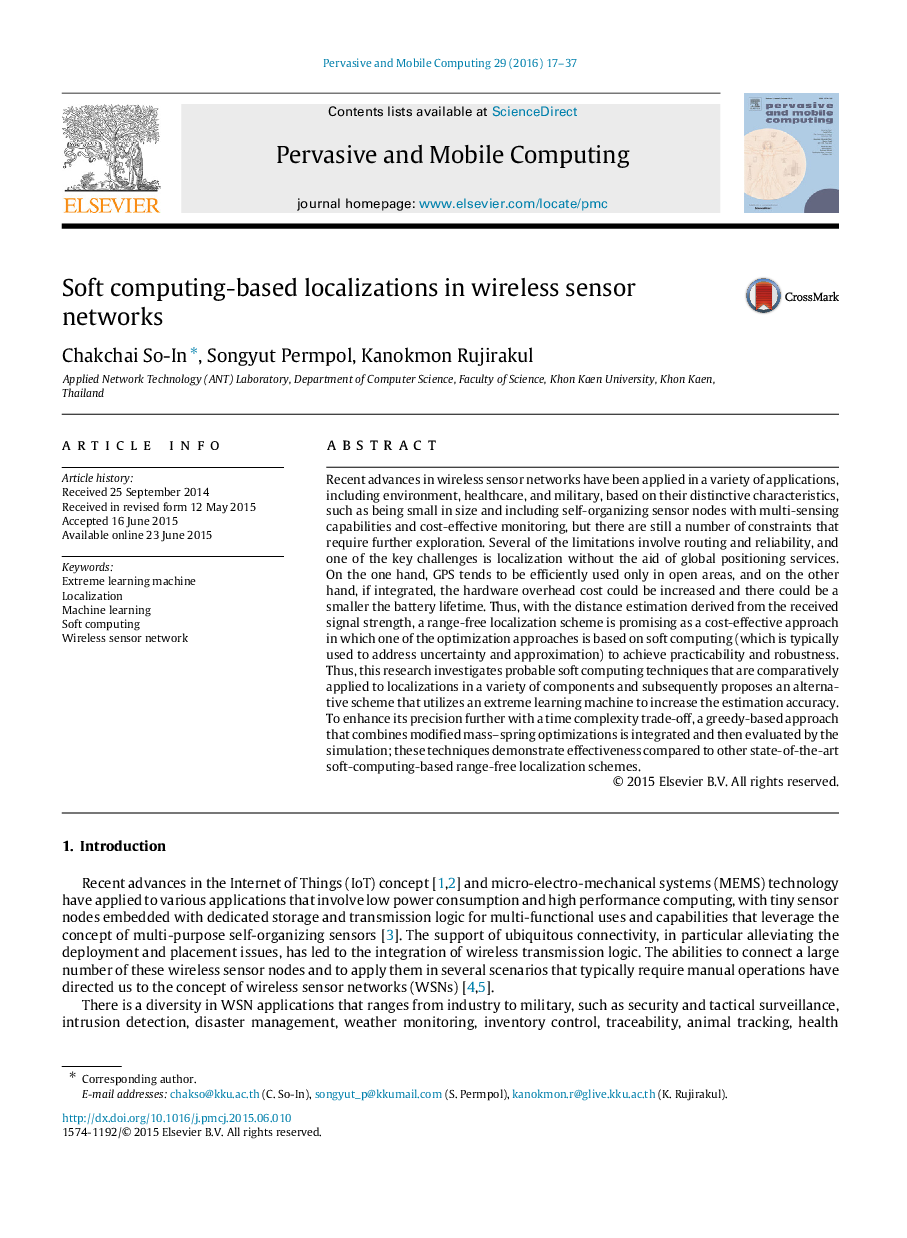| Article ID | Journal | Published Year | Pages | File Type |
|---|---|---|---|---|
| 465838 | Pervasive and Mobile Computing | 2016 | 21 Pages |
Recent advances in wireless sensor networks have been applied in a variety of applications, including environment, healthcare, and military, based on their distinctive characteristics, such as being small in size and including self-organizing sensor nodes with multi-sensing capabilities and cost-effective monitoring, but there are still a number of constraints that require further exploration. Several of the limitations involve routing and reliability, and one of the key challenges is localization without the aid of global positioning services. On the one hand, GPS tends to be efficiently used only in open areas, and on the other hand, if integrated, the hardware overhead cost could be increased and there could be a smaller the battery lifetime. Thus, with the distance estimation derived from the received signal strength, a range-free localization scheme is promising as a cost-effective approach in which one of the optimization approaches is based on soft computing (which is typically used to address uncertainty and approximation) to achieve practicability and robustness. Thus, this research investigates probable soft computing techniques that are comparatively applied to localizations in a variety of components and subsequently proposes an alternative scheme that utilizes an extreme learning machine to increase the estimation accuracy. To enhance its precision further with a time complexity trade-off, a greedy-based approach that combines modified mass–spring optimizations is integrated and then evaluated by the simulation; these techniques demonstrate effectiveness compared to other state-of-the-art soft-computing-based range-free localization schemes.
